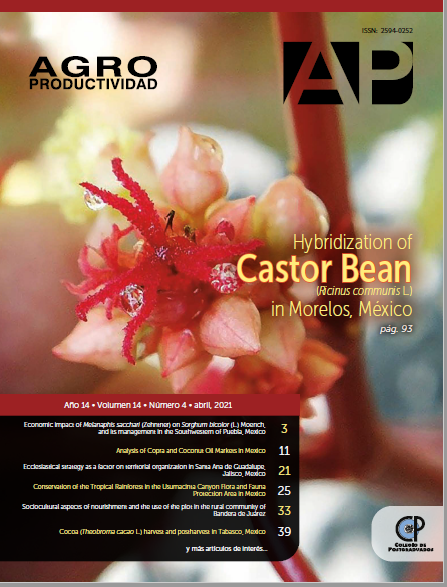CACAO (Theobroma cacao L.) HARVEST AND POST-HARVEST IN TABASCO, MEXICO
Main Article Content
Keywords
Harvest, cacao, fermentation, drying.
Abstract
Objective: To characterize the cacao harvest and postharvest management system in the Chontalpa Region, Tabasco.
Design/methodology/approach: The study was carried out in the towns of Francisco Trujillo Gurría and Ernesto Aguirre Colorado of the municipality of Huimanguillo, Tabasco. The study was descriptive, and considered 51 producers and those responsible for the cacao postharvest centers. The producers were chosen by directed sampling. A survey on harvest and another one on postharvest was applied, and direct observation was made in the plantations and in the postharvest centers.
Results: The cacao harvest is manual. Producers cut ripe and uder-ripe fruits, do not store them, and 58.8% of them do not break the fruits in a specific place. With the machete, divide the fruit in half and extract the grain by hand. Fresh grain is sold to the collection center. There, cacao is fermented in wooden boxes, dried artificially, naturally or in combination, and packaged it in jute bags for sale. The collection centers do not keep a record of the origin of the grains, and do not select or determine the quality of their product.
Limitations of the study/implications: The way of harvesting is the same for all producers, but the reported postharvest process could be different in other collection centers. The above suggest to replicate the study and to include private collection centers.
Findings/conclusions: The harvest of cacao fruits of different maturity and not storing them causes a heterogeneous fermentation. The humidity level along drying is determined empirically.

